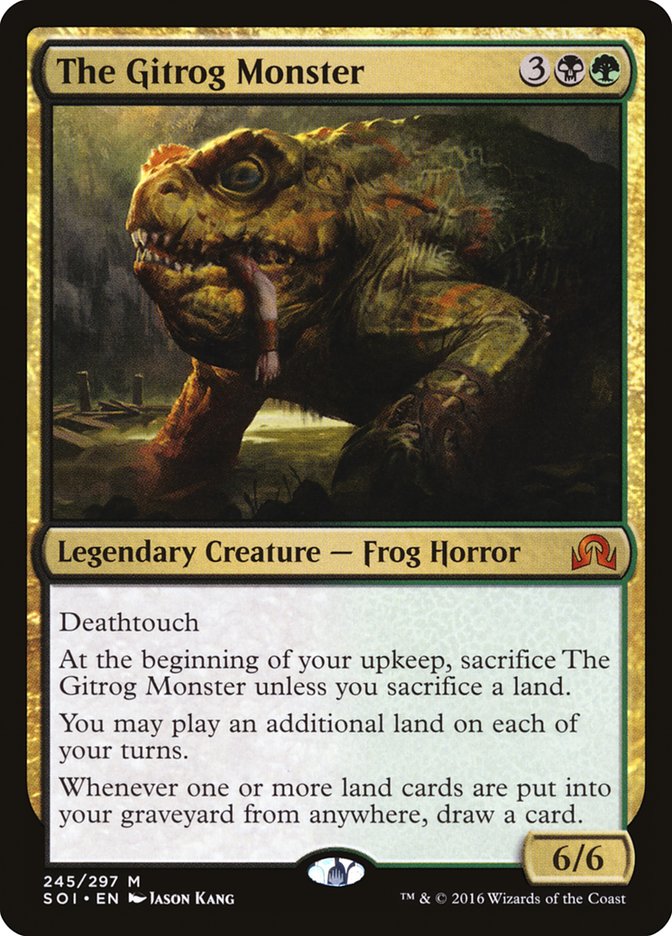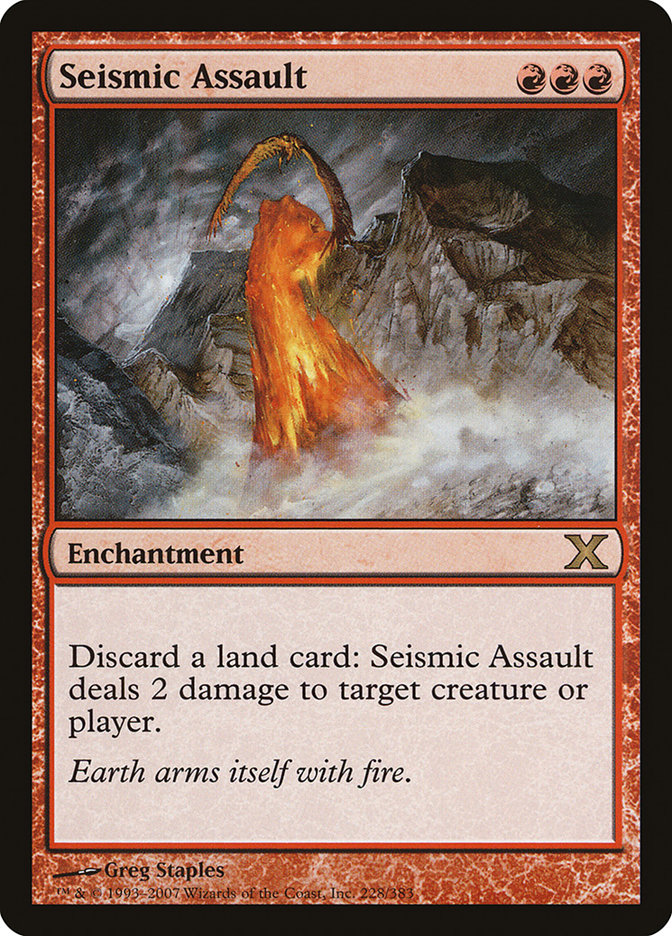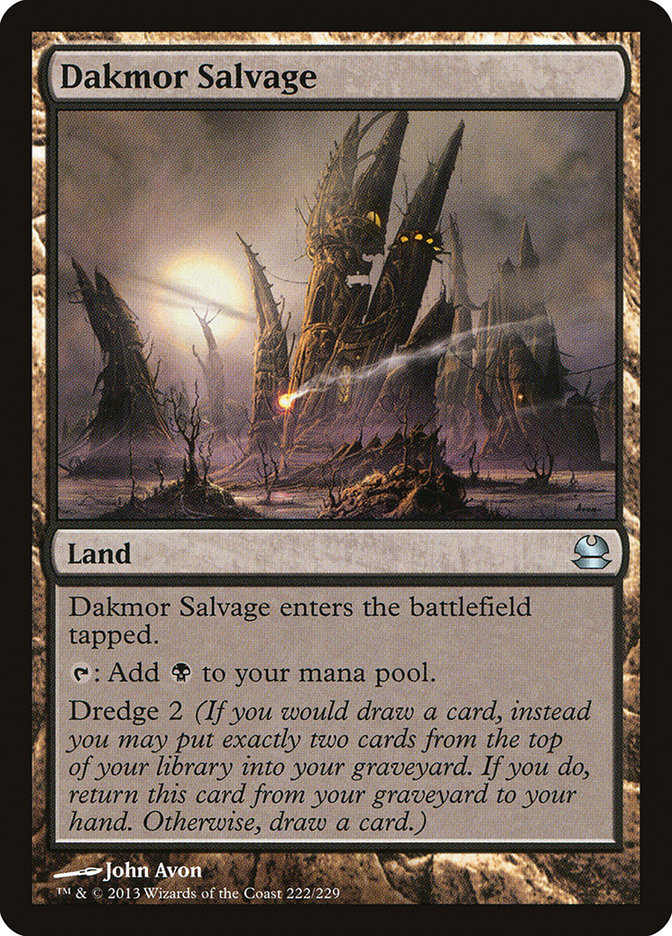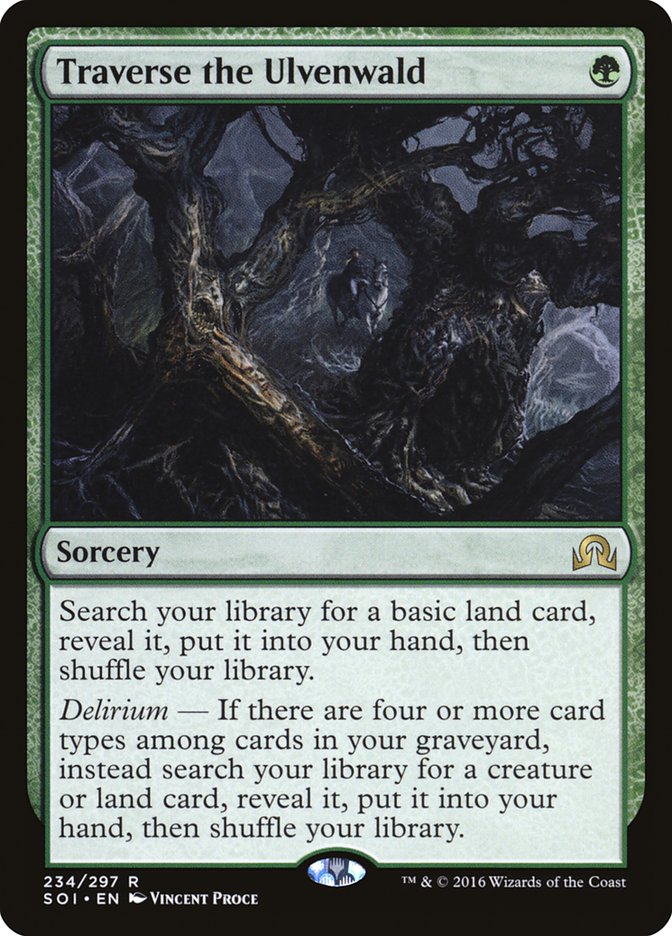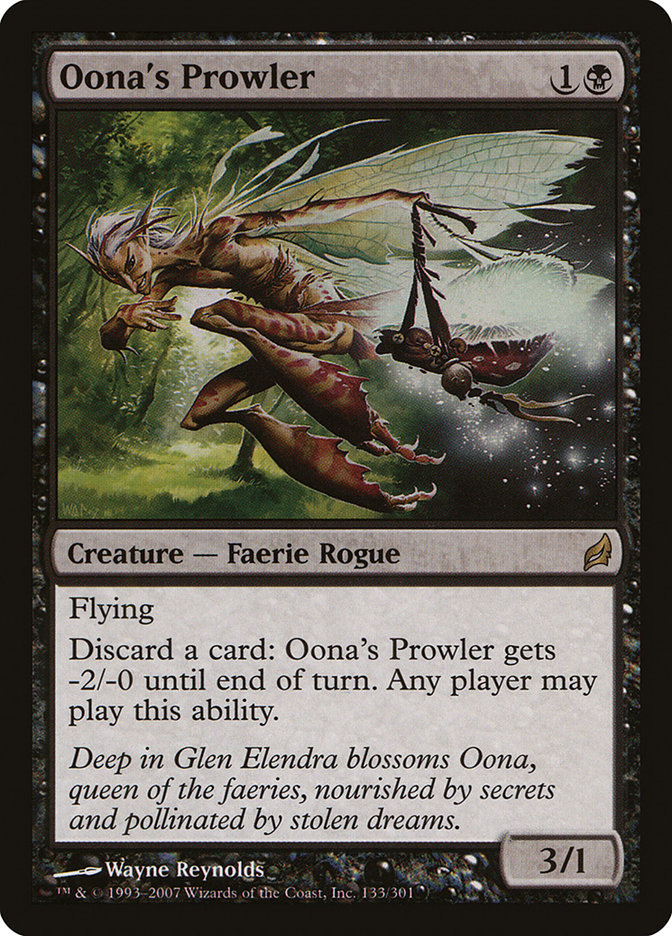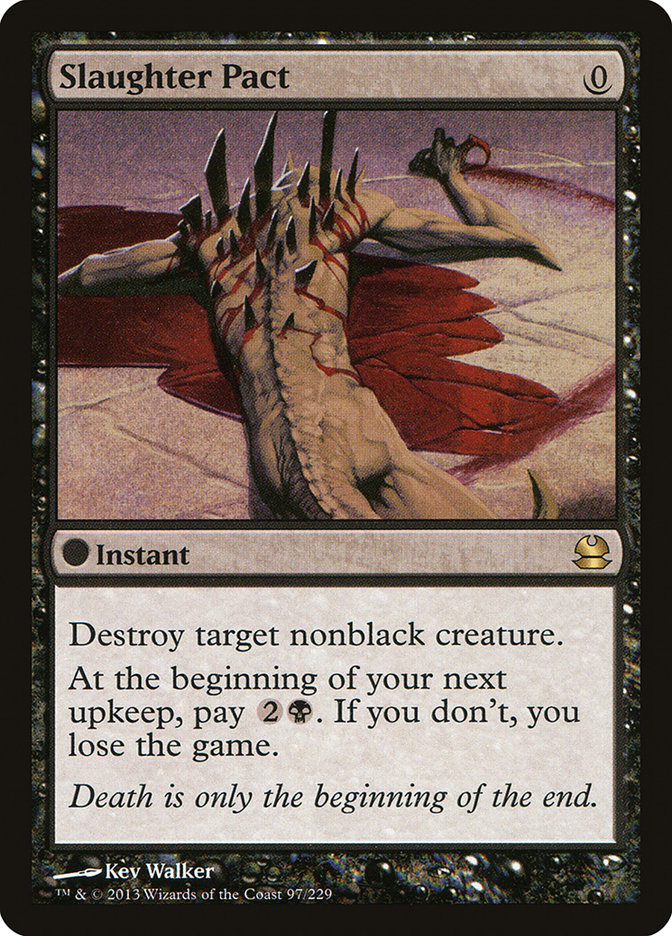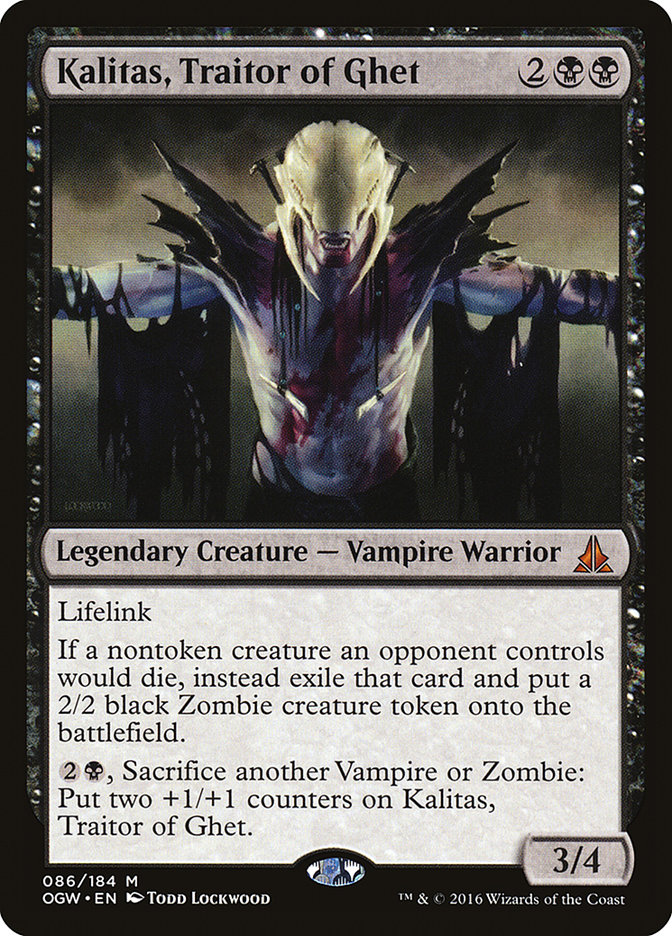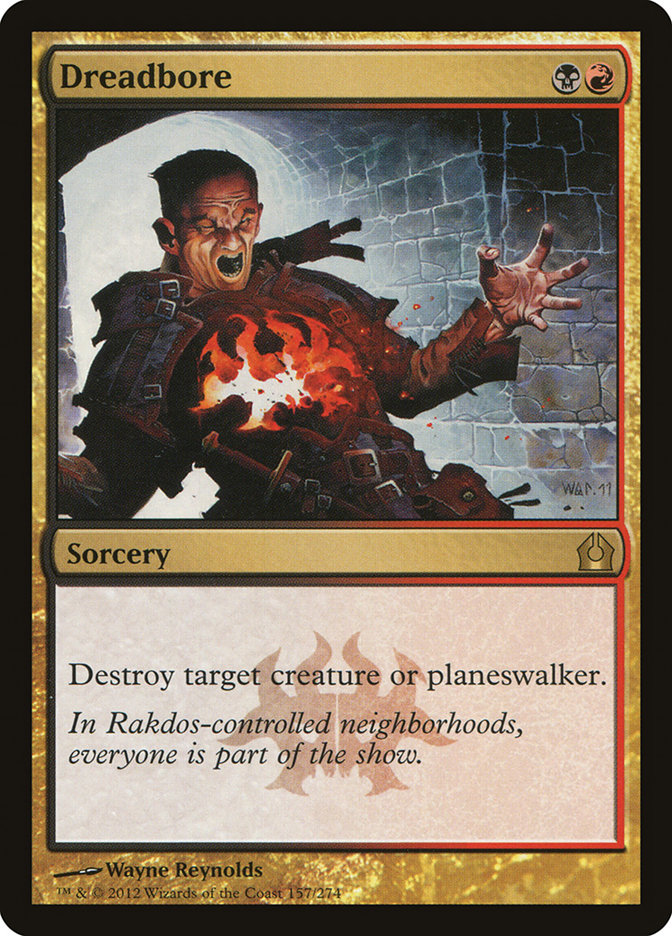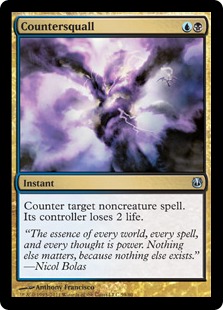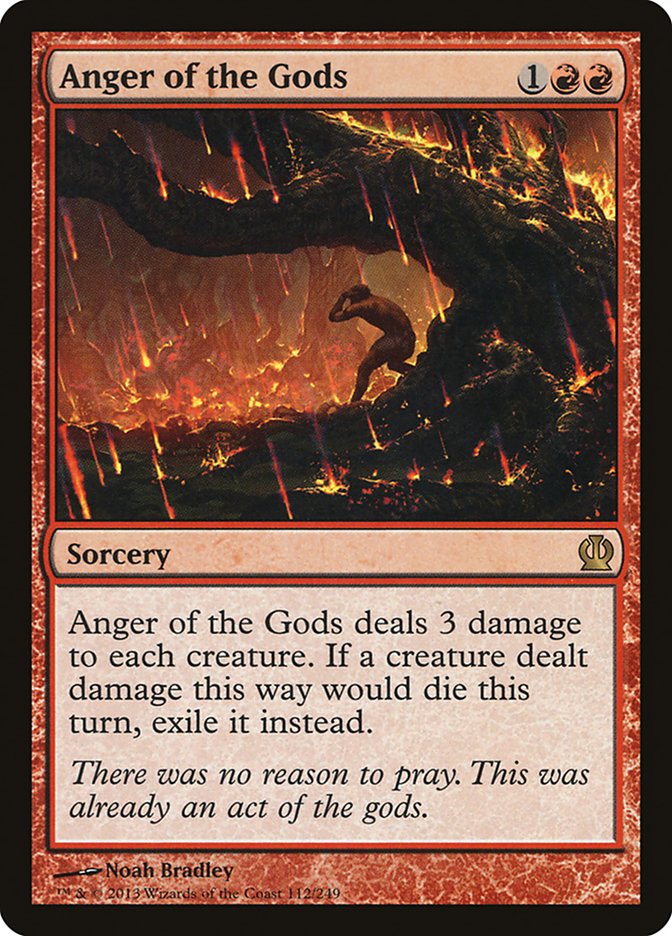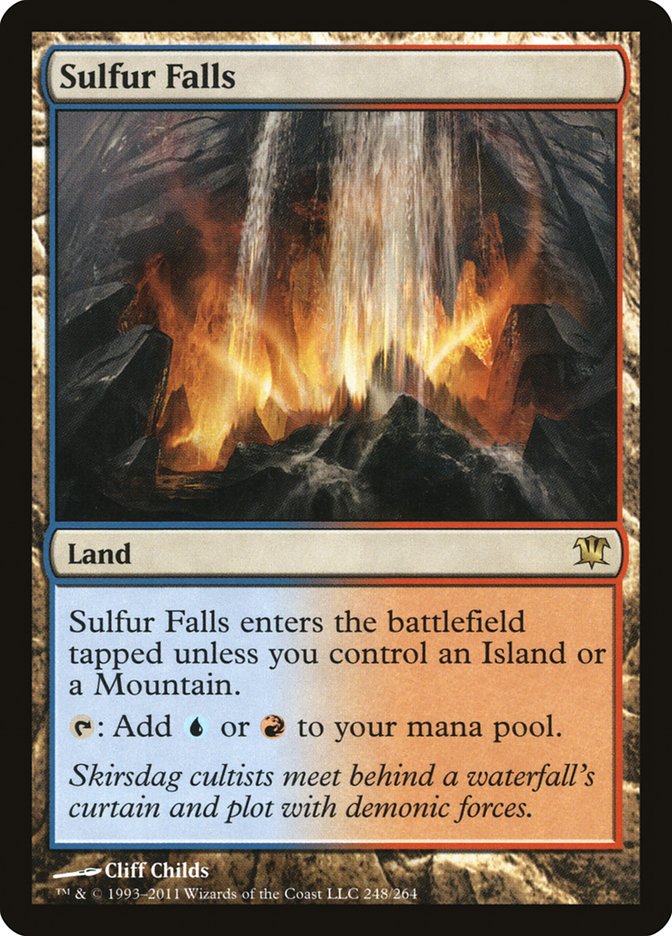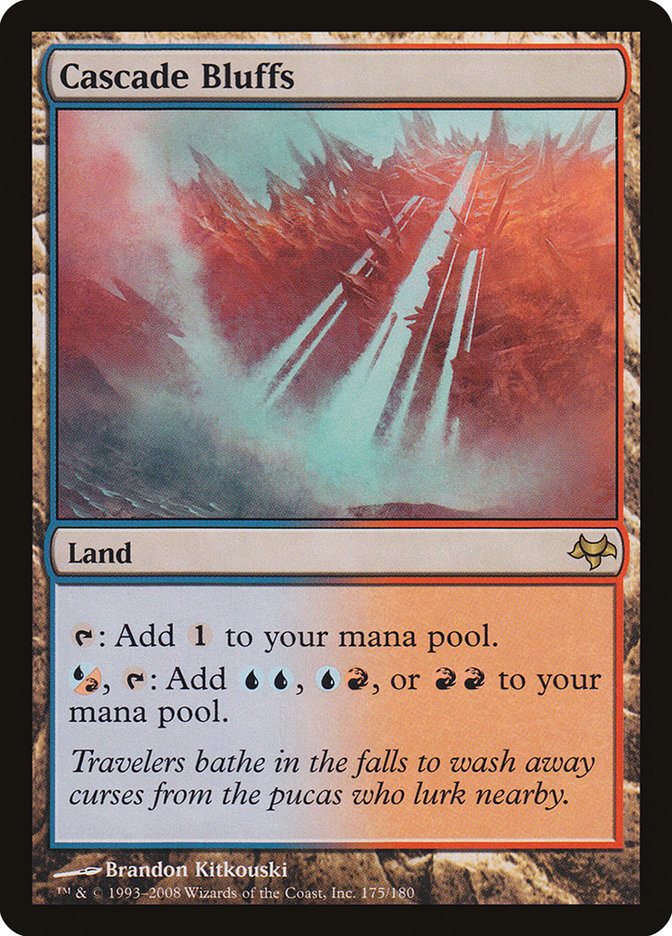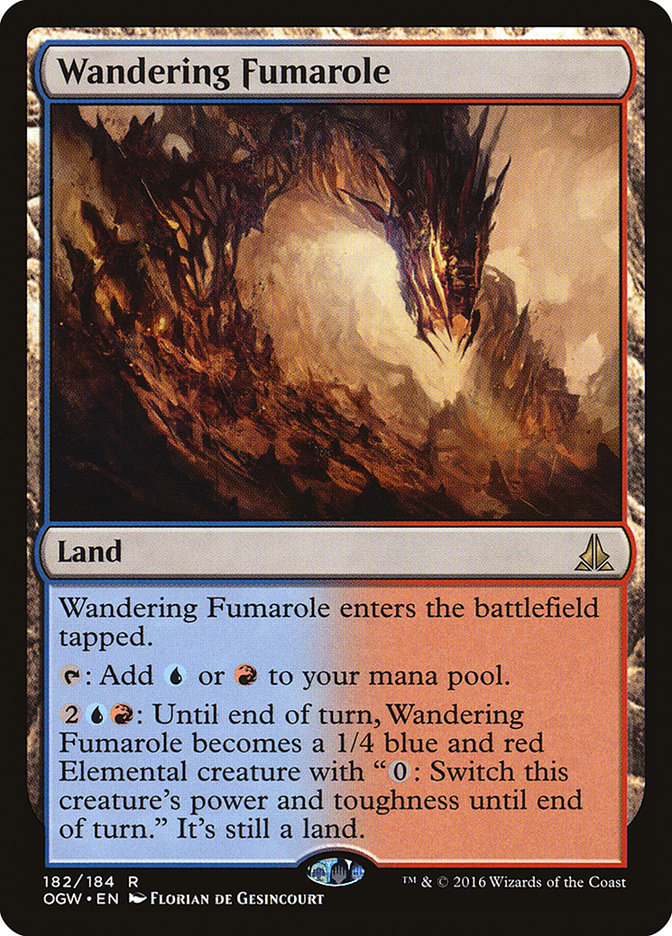 roots...
roots...
…
This weekend, I had the pleasure of competing in #GPLA, and with Grixis, no less. I always love southern California, plus there was just a lot of really cool stuff like the VIP meet-and-greet and some new coverage experiments.
Luis Scott-Vargas, Marshall Sutcliffe, Gaby Spartz, and Huey Jensen were great, of course, but it was also cool, the system of having two of them covering the primary match and two covering a second match to start presenting, as time permits. It does take four people, but it ensured effectively no wait time for matches and lots of little breaks for the commentators.
I knew I was primarily interested in blue decks for this event, but did spend a little time working on The Gitrog Monster in Jund.
If you’ve got The Gitrog Monster on the battlefield, every land you discard to Seismic Assault makes you draw a card. If the land you discarded was Dakmor Salvage, you actually dredge that same Dakmor Salvage instead of drawing. Not only does this let you mill yourself for two to deal two damage to your opponent, it also lets you draw more cards, since every land you mill from dredging gives you another draw trigger. Just be careful not to deck yourself, since the draw isn’t optional!
While there are a lot of ways to build around this combo, the most immediately attractive to me was just slotting it into a Seismic Assault / Life from the Loam deck. The Gitrog Monster would be good on its own regardless, so it would be nice to find a deck where Seismic Assault was good on its own. Dakmor Salvage is always at least a land but has extra value in a Loam deck.
Creatures (7)
Lands (28)
Spells (24)
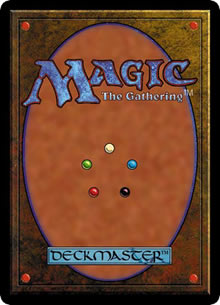
The other approach to this Gitrog Jund deck that I’m really interested in builds on the Traverse the Ulvenwald stuff I’ve been talking about over the past few weeks. If we could reasonably support it while still having enough Loam stuff and enough interaction to not just die to combo, it is a pretty good tutor for our Dakmor Salvage or The Gitrog Monster. It doesn’t find Seismic Assault very easily; however, you could search up a lone copy of Oona’s Prowler.
If you have Oona’s Prowler on the battlefield, when you drop The Gitrog Monster, you can discard Dakmor Salvage and then immediately dredge it back as often as you wish. While milling our entire library is already interesting, this combo is actually a lot more than that.
Remember, every time you dredge at least one land, you will draw a card. Of course, you can’t control which cards you draw, since you’ll have to mill a lot more cards than the number you draw; however, if you have a single copy of Emrakul, the Aeons Torn or Ulamog, the Infinite Gyre in your deck, you never have to run out.
Now you can effectively just keep going until you draw your entire deck. At that point, maybe you’ve got three Simian Spirit Guides, which let you cast one of your Seismic Assaults. You don’t have to worry about running out of cards because of The Gitrog Monster, since you can always just discard Emrakul and then shuffle it back each time you would draw a card. Maybe something like:
Creatures (6)
- 1 Eternal Witness
- 1 Oona's Prowler
- 1 Shriekmaw
- 1 Swans of Bryn Argoll
- 1 Emrakul, the Aeons Torn
- 1 The Gitrog Monster
Planeswalkers (4)
Lands (26)
Spells (24)

While I am excited about these general paths, a few games of testing made it clear that I just didn’t have enough time to tune it and gain enough confidence that it was actually a good choice. By contrast, I have built enough Modern blue decks that I could be very sure my list was at least decent and that I’d play it reasonably. Besides, I don’t get to play that many Modern tournaments. Playing a blue deck would be a lot of fun, and they are certainly good right now.
I really like Lightning Bolt right now, which quickly narrowed my focus to Jeskai, Temur, and of course Grixis. While I thought Jeskai had some appealing things going on (Nahiri, the Harbinger among them), I’m really not a fan of playing the same build of Modern blue decks that everyone is targeting from the week before.
Creatures (12)
Lands (24)
Spells (24)

I played a couple of games and definitely felt like it was a solid option. At the end of the day, however, I had to go with Michael Majors on this one. It’s not just that he’s made several “best deck of the week”s this year. He’s also doing a great job of explaining his reasoning in his articles, and the stuff he’s been saying just makes a lot of sense to me.
His latest Grixis list was similar enough to what I’ve been working on, I decided that his list was likely better tuned than anything I’d come up with for Temur. The list I ended up registering was four cards different in the main and one in the sideboard, compared to the list he posted in his last article on the topic.
Creatures (10)
Lands (23)
Spells (27)
- 4 Lightning Bolt
- 3 Mana Leak
- 4 Serum Visions
- 2 Terminate
- 2 Spell Snare
- 3 Ancestral Vision
- 3 Inquisition of Kozilek
- 1 Thought Scour
- 2 Dreadbore
- 3 Kolaghan's Command
Sideboard

To start with, I moved the third Ancestral Vision to the maindeck and the third Terminate to the sideboard. I didn’t fully appreciate just how right he was when he said, “I don’t know that I’d care to draw as many Ancestral Visions Game 1…” Ancestral Vision is a great card, but so are Snapcaster Mage; Kalitas, Traitor of Ghet; Tasigur, the Golden Fang; Goblin Dark-Dwellers; and Kolaghan’s Command, which all contribute to the card advantage we’re looking for.
My other changes were replacing two Thought Scours and a Slaughter Pact with Spell Snares and a Kolaghan’s Command. I was a big fan of the Spell Snares and Command, and would advocate continuing such a build. I would, however, prefer the Slaughter Pact to the third Terminate or the third Vision in the maindeck.
Slaughter Pact combines very well with Kalitas. Even when they kill him, you get a bonus Zombie (not to mention the ability to exile their Kitchen Finks or whatever).
Kalitas was so good for me, over and over. I did play against a lot of Abzan Company decks (where it is just the nuts), but I sort of feel like the third Kalitas might belong in the maindeck. That it messes up Ravager and gives us a chance against Burn is very appealing.
Even though I only faced one Nahiri deck, I was still very satisfied with Dreadbore. The slow speed never cost me, and I also faced Liliana of the Veil; Jace, Architect of Thought; and Chandra, Flamecaller. While I didn’t mind having them against Abzan Company, I did sideboard them out in that matchup (just on account of having better options).
I also lost two matches to Merfolk because of Master of Waves. Protection from red was a major blind spot that needs to be addressed. In addition to a Slaughter Pact maindeck, I want to add two Kozilek’s Returns to the sideboard (although not for Anger of the Gods, because that card was absolutely amazing for me). One of my other losses was to Affinity, despite being way ahead. I just couldn’t beat Etched Champion, and Kozilek’s Return would have easily won it for me.
One minor, but important change to the sideboard was replacing one Negate with a Countersquall.
Countersquall isn’t just a hard-to-cast Negate (and it’s really not that hard). It is a much more powerful card, in basically the exact same way that Destructive Revelry is a more powerful card than Naturalize. There is this idea that the two points of life loss doesn’t matter, but how much of a control deck are we, really? Besides, we’re talking about a deck of Lightning Bolts. It all matters. Snapcaster Mage, Goblin Dark-Dwellers, Creeping Tar Pit…this deck does a lot of incidental damage and gets into racing situations.
As it turned out, I won a game and a match because of Countersquall, where Negate would have lost it for me. I played a split, as a hedge, for scenarios where I draw both and need the easier-to-cast option. Playing both in the same turn is also a fair bit easier when one is a Negate.
One of the big successes of the sideboard was the use of Boom // Bust:
Boom // Bust is a very powerful weapon against these new Valakut and Tron decks. You can play it on turn 3 as a Stone Rain (targeting your fetchland and then cracking it in response). That should buy you enough time to get to Goblin Dark-Dwellers, which lets you cast Bust, aka the “destroy all lands” half (which is weird). Not only did you Armageddon the land-combo deck, you’ve even got a hard-hitting threat to finish them before they can recover.
The need for Kozilek’s Return notwithstanding, the deck was great. There was a great balance of threats, interaction, card advantage, mana. I started out 10-1 before going 0-3-1 in the final rounds. My records versus specific decks were as follows:
Day 1
2-0 vs. Abzan Company
1-0 vs. Merfolk
1-0 vs. Merfolk (white splash)
1-0 vs. Blue Moon
0-1 vs. Affinity
Day 2
1-0 vs. Naya Nahiri/Valakut
1-0-1 vs. Abzan Company
0-1 vs. Merfolk
0-1 vs. Merfolk (red splash)
0-1 vs. Jund
I’m not sure how representative my mix of opponents was, as that is a lot of Merfolk and Abzan Company, but I just kept sideboarding out Ancestral Vision, and frequently Mana Leak. Ancestral Vision is just not the way to fight Abzan, Merfolk, or Affinity. Meanwhile, I kept sideboarding in Anger of the Gods.
Anger of the Gods is just amazing in the format right now. It’s one of the best cards in the format against Abzan Company, sweeping their battlefield, exiling to prevent graveyard combos, and even beating their traditional anti-attrition cards like Voice of Resurgence and Kitchen Finks. Unfortunately, it doesn’t do everything you’d want when you have Kalitas on the battlefield; but if you have Kalitas and cast Anger of the Gods, not getting the 2/2 Zombies is a real first world problem.
Against Merfolk, it doesn’t hit Master of Waves or Mutavault, but it will consistently kill two or three Merfolk in one shot. We’re already great at trading with them; we just need to not fall behind. Well, that and not lose to Master of Waves, but that’s why I want to add a couple of Kozilek’s Returns. We still want the Angers against Abzan (though we can definitely sideboard Kozilek’s Return against them, too).
Maybe it’s an over-reaction, but I wonder if we could just maindeck the Angers and keep Ancestral Vision in the sideboard? After all, I’d rather have the Angers the majority of the time. Yeah, Anger is gonna be dead sometimes, but Ancestral was dead for me often anyway.
Here’s where I am with Grixis:
Creatures (11)
Lands (24)
Spells (25)
- 4 Lightning Bolt
- 2 Mana Leak
- 4 Serum Visions
- 2 Terminate
- 2 Spell Snare
- 1 Slaughter Pact
- 3 Inquisition of Kozilek
- 2 Dreadbore
- 2 Anger of the Gods
- 3 Kolaghan's Command
Sideboard

This list moves the three Ancestral Visions to the sideboard to pre-sideboard the two Angers and the third Kalitas. It also cuts a Mana Leak for a Slaughter Pact and the Thought Scour for a 24th land. I could go either way on the 24th land versus a cantrip, but with the increased emphasis on Anger of the Gods, I definitely want another red source.
I was interested in a Cascade Bluffs, which makes casting Anger trivial; however, the difficulty it has casting Serum Visions, Spell Snare, Lightning Bolt, Terminate, and Dreadbore looks too great to me.
Wandering Fumarole is definitely an option, too. It’s particularly appealing as a way to flood a little less, since we just went up a land. However, I think Fumarole would be a lot worse than Creeping Tar Pit in this build. A lot of the time I attacked with Tar Pit, my opponent had creatures. Besides, I kind of felt like extra help grinding isn’t what I needed so much as fast and consistent mana. Let Kalitas, Dark-Dwellers, and Tasigur do the grinding.
I had an absolute blast this weekend and was definitely impressed with Grixis. If you’re into that sort of thing, I’d recommend checking it out. I’d also keep an eye on Michael Majors’s column for any updates he might have.
Now, getting back to The Gitrog Monster…

